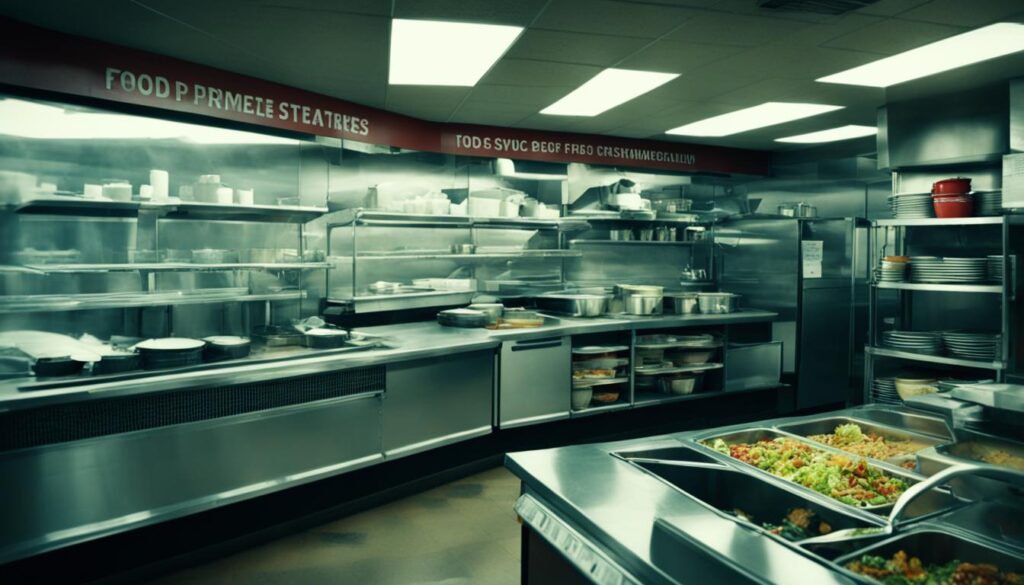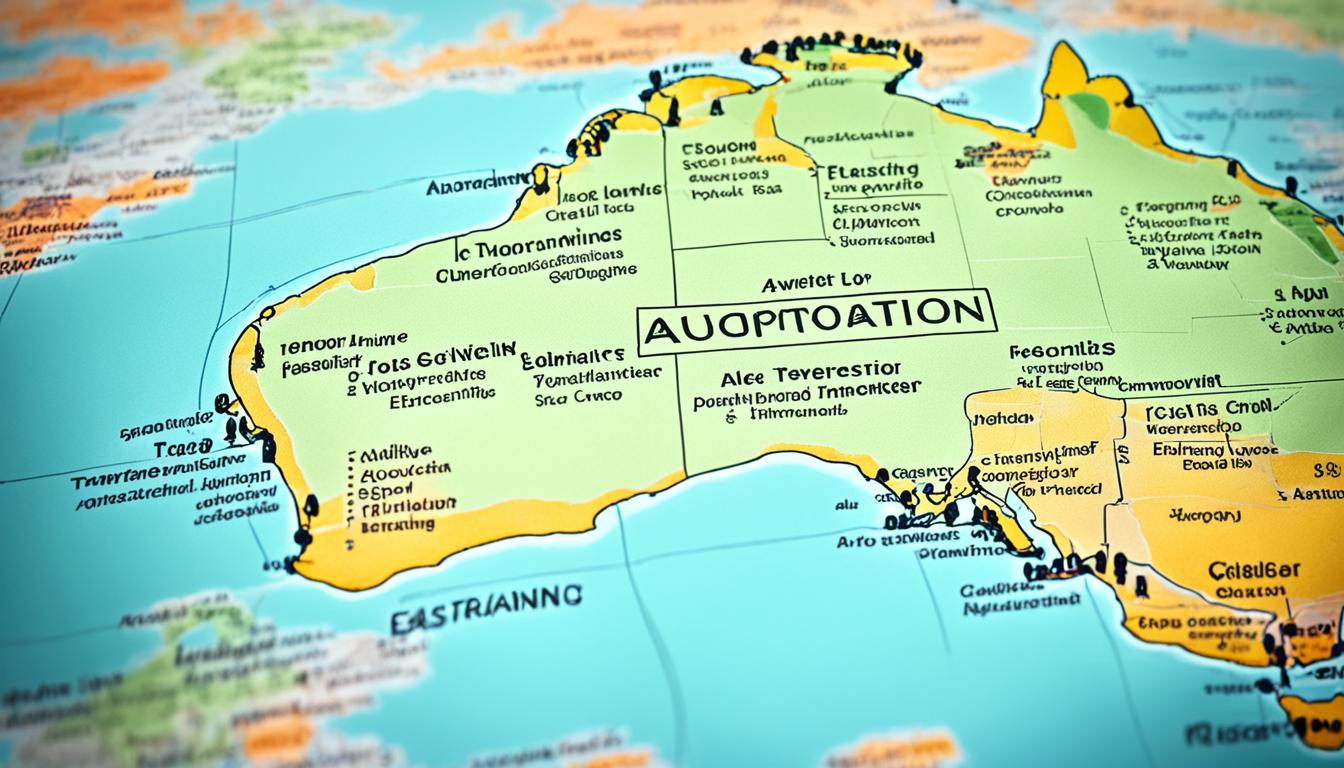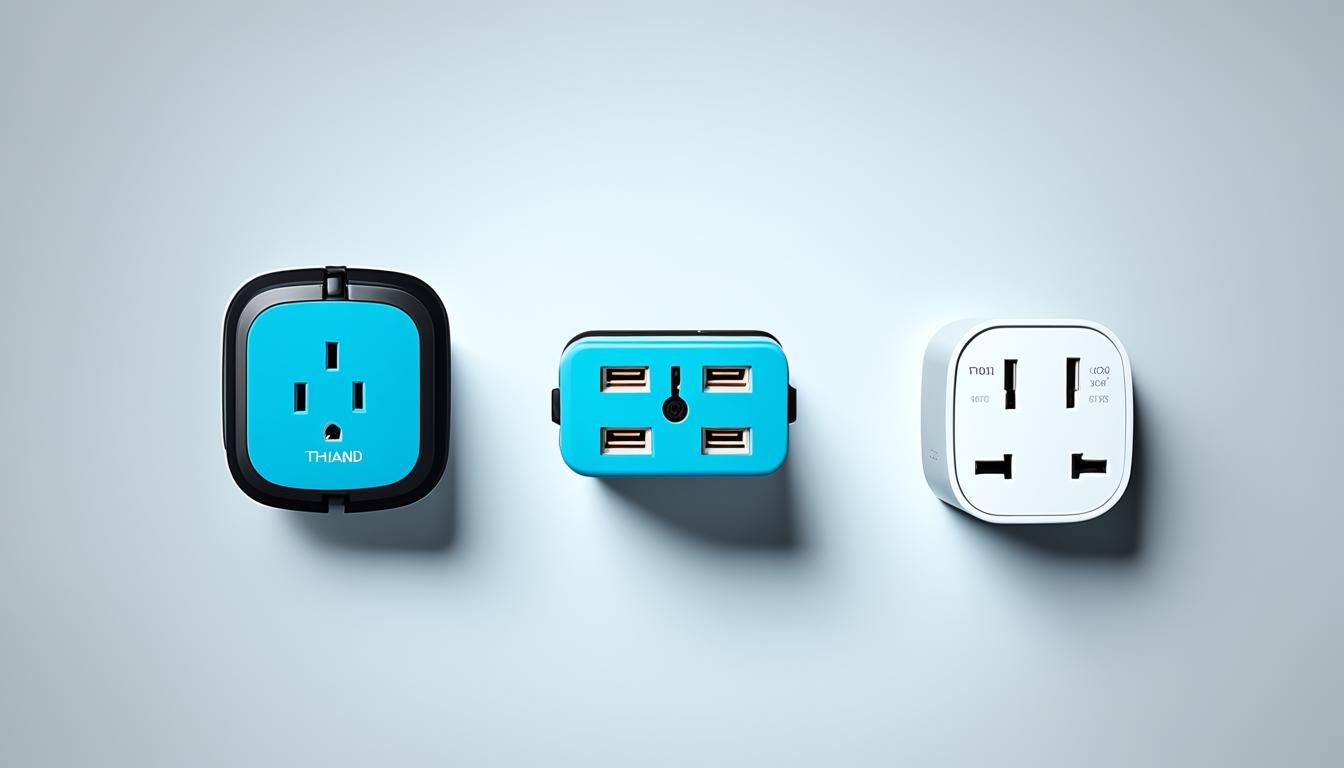
When it comes to choosing a place to eat, your safety and well-being should always be a top priority. That’s why understanding the range of food hygiene ratings is crucial. Food hygiene ratings provide valuable information about the safety and cleanliness of food establishments, helping you make informed decisions about where to dine.
So, what is the range of food hygiene ratings? Food safety ratings range from 0 to 5, with each number indicating a different level of compliance with hygiene standards. Higher numbers represent better hygiene practices, while lower numbers indicate areas where improvement is needed.
Key Takeaways:
- Food hygiene ratings range from 0 to 5, with higher numbers indicating better hygiene practices.
- Understanding food hygiene ratings helps you choose establishments that prioritize food safety.
- Monitoring changes in food hygiene ratings ensures you have the most up-to-date information.
- By interpreting food hygiene scores, you can actively ensure your safety when dining out.
- Food hygiene ratings play a crucial role in protecting public health and reducing the risk of foodborne illnesses.
What Are Food Hygiene Ratings?
Food hygiene ratings are a crucial measure of the safety and cleanliness of food establishments. These ratings provide valuable information to consumers like you, helping you make informed decisions about where to dine. By assessing the level of hygiene and compliance with food safety regulations, food hygiene ratings offer insights into the overall quality of an establishment’s practices.
Food hygiene ratings, also known as food hygiene scores or food inspection ratings, are assigned to restaurants, cafes, and other food outlets based on a thorough inspection conducted by food safety officers. These inspections evaluate various factors related to hygiene and safety, such as cleanliness, food handling practices, and the management of food safety.
| Food Hygiene Rating | Explanation |
|---|---|
| 0 – Urgent Improvement Needed | The establishment has significant food safety issues that pose a risk to public health. Urgent improvements are necessary. |
| 1 – Major Improvement Necessary | While the establishment has some issues that need addressing, they are not as severe as those associated with a rating of 0. |
| 2 – Improvement Necessary | Improvements are required for the establishment to reach a higher level of hygiene. The identified issues may not be as significant as those with lower ratings. |
| 3 – Generally Satisfactory | The establishment meets hygiene standards and is generally satisfactory. Some minor improvements may be necessary. |
| 4 – Good | The establishment has achieved a high level of compliance with hygiene standards and demonstrates good food hygiene practices. |
| 5 – Very Good | The highest rating signifies exceptional hygiene practices. Restaurants with this rating demonstrate outstanding compliance with food safety regulations. |
Understanding food hygiene ratings is essential for ensuring your safety when dining out. By interpreting these ratings, you can actively protect yourself against potential foodborne illnesses and make informed choices about where to eat.
How Are Food Hygiene Ratings Calculated?
Food hygiene ratings are an essential tool for assessing the safety and cleanliness of food establishments. These ratings not only provide valuable information for consumers but also help drive improvements in food safety practices. But how are food hygiene ratings calculated? Let’s delve into the process.
Thorough Inspections by Food Safety Officers
Food hygiene ratings are determined through rigorous inspections conducted by qualified food safety officers. These officers are trained to evaluate various aspects of food establishments to ensure compliance with hygiene standards.
Factors Assessed in Food Hygiene Inspections
During inspections, food safety officers consider multiple factors to determine a rating. The key areas assessed include:
- Cleanliness: The cleanliness of the premises, including surfaces, equipment, and utensils.
- Food handling practices: The proper handling and storage of food to prevent contamination.
- Management of food safety: The implementation of procedures and systems to ensure food safety.
These factors are individually evaluated to gauge the level of compliance with hygiene standards and regulations.
Assigning Ratings on a Scale
Food hygiene ratings are typically assigned on a scale ranging from 0 to 5, indicating varying levels of compliance with hygiene standards. Higher ratings indicate better adherence to food safety practices.
To help you better understand how food hygiene ratings are assigned, here is a breakdown of the scale:
| Food Hygiene Rating | Level of Compliance |
|---|---|
| 0 | Urgent Improvement Needed |
| 1 | Major Improvement Necessary |
| 2 | Improvement Necessary |
| 3 | Generally Satisfactory |
| 4 | Good |
| 5 | Very Good |
It’s important to note that ratings are not permanent and can change over time based on ongoing inspections. Regular monitoring of food hygiene ratings helps ensure that establishments maintain their standards and continue to prioritize food safety.
By understanding how food hygiene ratings are calculated, you can make informed decisions when choosing where to dine. These ratings offer valuable insights into the safety and cleanliness of food establishments, empowering you to prioritize your well-being.
Understanding the Food Hygiene Grades Scale
The food hygiene grades scale is an essential tool for assessing the cleanliness and safety of food establishments. Ranging from 0 to 5, the ratings provide valuable information about the level of compliance with hygiene standards. By understanding the meaning of each grade, you can make informed choices about where to dine.
The food hygiene grades scale follows a logical progression, with higher numbers indicating better hygiene practices. Let’s take a closer look at each rating:
0 – Urgent Improvement Needed
A food hygiene rating of 0 signifies that the establishment requires urgent improvement in multiple areas of hygiene and safety. Restaurants with this rating may have major food safety issues that pose a risk to public health.
1 – Major Improvement Necessary
A rating of 1 indicates that major improvements are necessary to meet hygiene standards. While the establishment may have some issues that need addressing, they are not as severe as those associated with a rating of 0.
2 – Improvement Necessary
A rating of 2 suggests that improvements are required to reach a higher level of hygiene. The issues identified may not be as significant as those with lower ratings but still require attention and action from the establishment.
3 – Generally Satisfactory
A rating of 3 indicates that the establishment meets hygiene standards and is generally satisfactory. While there may be some minor areas for improvement, overall, the restaurant has good practices in place.
4 – Good
A rating of 4 demonstrates that the establishment has achieved a high level of compliance with hygiene standards. The restaurant has excellent practices in place and is considered to have good food hygiene.
5 – Very Good
The highest rating of 5 signifies exceptional hygiene practices. Restaurants with this rating demonstrate outstanding compliance with food safety regulations.
Understanding the food hygiene grades scale allows you to assess the hygiene practices of food establishments and make informed decisions about where to dine. By considering these ratings, you can prioritize your safety and enjoy a worry-free dining experience.
0 – Urgent Improvement Needed
In the realm of food hygiene ratings, a score of 0 indicates a dire need for urgent improvement in multiple aspects of hygiene and safety. Restaurants that receive this rating are found to have significant food safety issues, posing a potential risk to public health.
To better understand the severity of a rating of 0, it is crucial to delve into the specific areas of concern. Here are some potential issues that may be present in establishments with this rating:
- Inadequate temperature control: Food items may not be stored or cooked at the required temperatures, increasing the risk of bacterial growth and foodborne illnesses.
- Poor handling practices: Unhygienic food handling practices, such as improper handwashing or cross-contamination between raw and cooked foods, may be prevalent.
- Lack of cleanliness: Restaurants with a rating of 0 may exhibit unsanitary conditions, including dirty surfaces, unkempt kitchen areas, or pest infestations.
- Inefficient management of food safety: These establishments may have inadequate systems in place for monitoring and managing food safety, leading to a higher risk of contamination and illness.
It is essential to note that a rating of 0 serves as a strong indicator that immediate corrective actions are needed to ensure compliance with hygiene standards and protect the well-being of consumers.
Critical Quote:
“A food hygiene rating of 0 should be taken seriously, signaling major deficiencies in safety practices. It is essential for these establishments to address the identified issues promptly to safeguard public health.”
| Common Issues in Establishments with a Rating of 0: | Example Scenario |
|---|---|
| Inadequate temperature control | An Indian restaurant was found storing cooked dishes at room temperature for extended periods, allowing bacteria to multiply rapidly. |
| Poor handling practices | A fast-food chain was observed failing to adhere to proper handwashing protocols, increasing the risk of food contamination. |
| Lack of cleanliness | A local café had unclean food preparation surfaces, evidence of pest infestations, and poorly maintained kitchen facilities. |
| Inefficient management of food safety | A family-owned restaurant lacked proper documentation, training, and procedures to ensure consistent food safety practices. |
1 – Major Improvement Necessary
In the food hygiene ratings system, a rating of 1 signifies that major improvements are necessary for an establishment to meet hygiene standards. While there are some issues that need addressing, they are not as severe as those associated with a rating of 0.
“Major improvements are necessary to ensure the safety and cleanliness of the establishment.”
Restaurants, cafes, and other food outlets with a rating of 1 have been identified with significant hygiene concerns that require immediate attention. These concerns may include improper food storage, inadequate cleaning practices, or ineffective pest control measures. Although the level of risk is lower compared to a rating of 0, action must be taken to rectify the issues and ensure the health and safety of the customers.
Food establishments with a rating of 1 should aim to address these shortcomings promptly. By implementing necessary improvements, such as staff training, enhancing cleaning procedures, and strengthening hygiene protocols, the establishment can work towards achieving a higher rating and providing a safer environment for their patrons.
It is important for consumers to be aware of establishments with a rating of 1 and consider the associated risks. While improvements are being made, it is advisable to exercise caution when dining at these establishments and weigh the potential health risks against personal preference.
Factors contributing to a rating of 1:
- Lack of proper temperature control during food storage and preparation
- Inadequate cleaning and disinfection practices
- Ineffective pest control measures
- Insufficient staff training on food hygiene and safety
- Non-compliance with food safety regulations and standards
By understanding the implications of a rating of 1 and being proactive in monitoring food hygiene ratings, consumers can make informed decisions about where to dine and support establishments that prioritize food safety.
| Food Hygiene Rating | Description |
|---|---|
| 0 – Urgent Improvement Needed | A rating of 0 signifies that urgent improvement is needed in multiple areas of hygiene and safety. Restaurants with this rating may have major food safety issues that pose a risk to public health. |
| 1 – Major Improvement Necessary | A rating of 1 indicates that major improvements are necessary to meet hygiene standards. While the establishment may have some issues that need addressing, they are not as severe as those associated with a rating of 0. |
| 2 – Improvement Necessary | A rating of 2 suggests that improvements are required to reach a higher level of hygiene. The issues identified may not be as significant as those with lower ratings but still require attention and action from the establishment. |
| 3 – Generally Satisfactory | A rating of 3 indicates that the establishment meets hygiene standards and is generally satisfactory. While there may be some minor areas for improvement, overall, the restaurant has good practices in place. |
| 4 – Good | A rating of 4 demonstrates that the establishment has achieved a high level of compliance with hygiene standards. The restaurant has excellent practices in place and is considered to have good food hygiene. |
| 5 – Very Good | The highest rating of 5 signifies exceptional hygiene practices. Restaurants with this rating demonstrate outstanding compliance with food safety regulations. |
Next, we will explore establishments with a rating of 2, where improvement is necessary to reach a higher level of hygiene.
2 – Improvement Necessary
A food hygiene rating of 2 suggests that there are areas where improvements are necessary to achieve a higher level of hygiene and safety. While the issues identified may not be as significant as those with lower ratings, they still require attention and action from the establishment.
Food safety is crucial to maintaining the well-being of both customers and staff. A rating of 2 indicates that there are specific practices or procedures that need to be addressed to ensure compliance with hygiene standards. By taking the necessary steps to improve, the establishment can create a safer environment for all.
Common factors that may contribute to a rating of 2 include inadequate cleaning and sanitization practices, incorrect storage of food, or lacking proper training for staff members. These issues can be resolved through comprehensive staff training, implementing stricter hygiene protocols, and regular monitoring and evaluation of food safety practices.
Improvements in hygiene not only enhance the overall cleanliness and safety of the establishment but also contribute to customer satisfaction. When diners see that an establishment is actively working to improve its food hygiene rating, it can help build trust and confidence in the establishment’s commitment to their well-being.
“Food hygiene ratings are designed to protect the consumer and encourage food businesses to strive for excellence in maintaining food safety standards. A rating of 2 serves as a clear indication that improvements are necessary, highlighting areas where the establishment can enhance their practices and better ensure the safety of their customers.”
Common Issues Associated with a Rating of 2:
- Inadequate cleaning and sanitation procedures
- Improper food storage and handling
- Lack of staff training in food safety
- Failure to maintain proper temperature controls
- Issues with pest control
Recommended Actions for Improvement:
- Implement comprehensive staff training on food hygiene practices
- Establish stricter cleaning and sanitization protocols
- Ensure proper food storage and handling procedures are followed
- Maintain accurate temperature controls for storing and cooking food
- Develop a strong pest control plan and address any infestations promptly
Example of a Food Hygiene Rating 2 Improvement Journey:
| Date of Inspection | Food Hygiene Rating | Reasons for Rating | Recommended Improvements |
|---|---|---|---|
| January 2020 | 2 | Inadequate cleaning procedures, inconsistent temperature controls | Implement regular deep cleaning schedule, review and improve temperature monitoring processes |
| March 2020 | 2 | Improper food storage, lack of staff training | Revise and improve food storage practices, provide comprehensive training on food safety |
| June 2020 | 2 | Issues with pest control | Engage professional pest control services, establish ongoing pest control monitoring |
| September 2020 | 4 | Significant improvements in all areas | Continue to maintain high standards, address any identified areas for further improvement |

3 – Generally Satisfactory
When a restaurant or food establishment receives a rating of 3 in food hygiene, it means that they meet the required hygiene standards and are considered generally satisfactory. This rating indicates that the establishment has implemented good practices to ensure food safety and cleanliness.
Although a rating of 3 is positive, it does not mean that the establishment is perfect. There may still be some minor areas for improvement that have been identified during the inspection process. These areas might include small issues that can be easily resolved to enhance overall hygiene standards.
To give you a better understanding, here are some examples of minor areas for improvement that might be noticed in establishments with a rating of 3:
- Proper storage and labeling of food products
- Maintaining equipment and utensils in good condition
- Effective cleaning and sanitization procedures
- Correct temperature control of foods
It’s important to note that a rating of 3 indicates that the establishment has satisfactory hygiene practices in place. However, it’s always a good idea to consider the specific details mentioned in the food hygiene report to make an informed decision about dining at a particular venue.
By paying attention to food hygiene ratings, you can easily identify restaurants with generally satisfactory practices, ensuring a safer dining experience for you and your loved ones.
Remember, a rating of 3 means the establishment meets hygiene standards and is generally satisfactory.
4 – Good
A rating of 4 demonstrates that the establishment has achieved a high level of compliance with hygiene standards. The restaurant has excellent practices in place and is considered to have good food hygiene.
5 – Very Good
Receiving a food hygiene rating of 5 is indicative of exceptional hygiene practices. When a restaurant achieves this rating, it demonstrates outstanding compliance with food safety regulations, ensuring your dining experience is both enjoyable and safe.
With a food hygiene rating of 5, you can have confidence in the establishment’s commitment to maintaining cleanliness and upholding the highest standards of food safety. Restaurants that consistently receive this rating prioritize hygiene at every level, from food handling and storage to overall cleanliness.
Choosing a restaurant with a rating of 5 provides you with the assurance that all necessary measures have been taken to reduce the risk of foodborne illnesses and ensure the safety of your meal. These establishments go above and beyond to maintain a clean and hygienic environment.
When considering your options, be sure to look for the food hygiene rating of 5, as it guarantees very good food hygiene practices. By dining at highly-rated establishments, you can enjoy your meal with peace of mind, knowing that your health and safety are paramount.
Importance of Food Hygiene Ratings
Understanding and considering food hygiene ratings is essential for making informed decisions about where to dine. These ratings provide valuable information about the safety and cleanliness of food establishments, helping you choose places that prioritize food safety.
“Food hygiene ratings are like a window into the kitchen of a restaurant. They give you a glimpse into how well they maintain hygiene and handle food safety. By paying attention to these ratings, you can ensure that you and your loved ones enjoy delicious meals without compromising on safety.”
When you see a food hygiene rating displayed at a restaurant or on an online platform, it serves as a testament to the establishment taking food safety seriously. It reflects their commitment to maintaining clean premises, following proper food handling practices, and ensuring the well-being of customers.
By considering food hygiene ratings, you can:
- Make an informed choice: Knowing the food hygiene rating allows you to assess whether a restaurant or food outlet meets your personal hygiene standards. It helps you decide whether the establishment aligns with your expectations for cleanliness and safety.
- Protect your health: Foodborne illnesses can result from improper food handling and poor hygiene practices. By choosing places with higher hygiene ratings, you minimize the risk of foodborne diseases and ensure a safer dining experience.
- Support responsible establishments: Food hygiene ratings act as a form of feedback for businesses. By patronizing restaurants with higher ratings, you support and reward their efforts in maintaining excellent food safety standards.
Remember, food hygiene ratings are not just numbers on a scale. They represent the dedication and responsibility of food establishments towards ensuring the health and well-being of their customers.
Food hygiene rating labels
Food hygiene ratings are often displayed using a set of labels or symbols, making them easily recognizable. These labels may vary depending on the region or country, but they generally follow a similar color-coded system.
| Rating | Label | Description |
|---|---|---|
| 0 | Urgent Improvement Needed – Major food safety issues present. | |
| 1 | Major Improvement Necessary – Significant food safety concerns. | |
| 2 | Improvement Necessary – Some areas require attention. | |
| 3 |  |
Generally Satisfactory – Meets minimum hygiene requirements. |
| 4 | Good – High level of compliance with hygiene standards. | |
| 5 | Very Good – Outstanding hygiene practices. |
These labels provide a quick visual reference to determine whether an establishment meets the desired food hygiene standards. When you come across these labels, you can confidently make choices that prioritize your health and safety.
Continue reading to learn how to use food hygiene ratings to ensure your personal safety when dining out.
Using Food Hygiene Ratings to Ensure Your Safety
Understanding and interpreting food hygiene scores is key to ensuring your safety when dining out. By checking the ratings before visiting a restaurant, you can make informed decisions and choose establishments that prioritize excellent hygiene practices.
Food hygiene ratings provide valuable information about the cleanliness and safety of food establishments. They are calculated based on thorough inspections carried out by food safety officers. These inspections assess factors such as cleanliness, food handling practices, and the management of food safety. The ratings are then assigned on a scale, indicating the level of compliance with hygiene standards.
When interpreting food hygiene scores, it’s important to consider the following:
- Higher ratings indicate better hygiene practices and compliance with food safety regulations.
- Lower ratings may highlight areas where improvements are necessary and pose a higher risk to your safety.
- Restaurants with higher ratings demonstrate excellent hygiene practices and prioritize food safety.
Checking food hygiene ratings can be a simple and effective way to protect yourself from potential health risks. By avoiding establishments with lower ratings, you decrease the likelihood of experiencing foodborne illnesses.
In addition to checking food hygiene ratings, it’s also advisable to pay attention to any visible signs of cleanliness and hygiene when visiting a restaurant. Look out for clean tables, properly stored food, and hygienic food handling practices.
“Food hygiene ratings provide valuable information about the cleanliness and safety of food establishments.”
By actively using and interpreting food hygiene scores, you can make more informed choices about where to dine. Prioritizing establishments with higher ratings ensures that you are selecting places with excellent hygiene practices and reducing the risk of potential health hazards.
| Rating | Implications |
|---|---|
| 0 – Urgent Improvement Needed | Signifies significant food safety issues and poses a risk to public health. |
| 1 – Major Improvement Necessary | Indicates the need for major improvements to meet hygiene standards. |
| 2 – Improvement Necessary | Suggests improvements are required to reach a higher level of hygiene. |
| 3 – Generally Satisfactory | Indicates adherence to hygiene standards with minor areas for improvement. |
| 4 – Good | Demonstrates a high level of compliance with hygiene standards. |
| 5 – Very Good | Signifies exceptional hygiene practices and outstanding compliance. |
By using food hygiene ratings as a guideline, you can make informed decisions about where to dine, prioritize your safety, and enjoy a worry-free dining experience.
Food Hygiene Ratings and Public Health
Food hygiene ratings play a crucial role in protecting public health. By promoting transparency and accountability, they encourage food establishments to maintain high standards of hygiene, reducing the risk of foodborne illnesses.
| Benefits of Food Hygiene Ratings | How They Protect Public Health |
|---|---|
| 1. Transparency: | Food hygiene ratings provide consumers with vital information about the cleanliness and safety of food establishments. This transparency enables customers to make informed decisions about where to dine, ensuring they choose establishments with high hygiene standards. |
| 2. Accountability: | Having a publicly available food hygiene rating holds food establishments accountable for their hygiene practices. Knowing that their rating is visible to customers and the local authorities motivates businesses to prioritize food safety and maintain rigorous hygiene standards. |
| 3. Compliance: | Food hygiene ratings serve as a benchmark for establishments, providing clear guidelines and standards to comply with. By adhering to these standards, restaurants and food outlets minimize the risk of foodborne illnesses, ensuring the public’s health and safety. |
| 4. Improvements: | Achieving a high food hygiene rating is an accomplishment that many establishments strive for. The ratings act as a driving force for continuous improvement, encouraging businesses to regularly assess and enhance their hygiene practices to protect public health. |
Food hygiene ratings are not only crucial for safeguarding the health of consumers but also for maintaining the reputation and success of food establishments. By prioritizing hygiene and receiving favorable ratings, restaurants can attract more customers and build trust within the community.
Next, we’ll explore the importance of monitoring changes in food hygiene ratings and how you can use this information to ensure your safety when dining out.
Monitoring Changes in Food Hygiene Ratings
Understanding the dynamic nature of food hygiene ratings is crucial for making informed dining choices. Food establishments’ ratings can change over time due to various factors, such as improvements in hygiene practices or the identification of new issues during inspections. By regularly monitoring these changes, you can stay informed and ensure that you choose restaurants based on the most up-to-date information.
Regular monitoring of food hygiene ratings allows you to:
- Stay updated: Ratings can change due to both positive and negative developments. By keeping track of these changes, you can ensure that you have the most current information about a restaurant’s hygiene standards.
- Make informed decisions: Monitoring rating updates helps you make well-informed decisions about where to dine. You can consider recent improvements or changes in ratings when selecting a restaurant for your next meal.
- Assess ongoing compliance: By observing changes in ratings, you can assess how well an establishment maintains food safety practices over time. Consistent high ratings indicate a commitment to hygiene, while fluctuating ratings may indicate inconsistent compliance.
Remember that changes in food hygiene ratings can impact the quality and safety of your dining experience. Pay attention to any rating updates and consider both the current rating and the establishment’s history when making your choice.
Example of Monitoring Changes in Food Hygiene Ratings
| Date | Restaurant | Previous Rating | New Rating |
|---|---|---|---|
| January 2020 | The Bistro | 3 – Generally Satisfactory | 4 – Good |
| March 2020 | Delicious Deli | 4 – Good | 2 – Improvement Necessary |
| June 2020 | Food Haven | 2 – Improvement Necessary | 3 – Generally Satisfactory |
The table above illustrates changes in food hygiene ratings for three different restaurants over several months. By monitoring these updates, you can see how establishments strive to maintain or improve their hygiene standards in response to inspections.
“Regular monitoring of food hygiene ratings helps you stay informed and make wise dining choices. By keeping track of changes, you can ensure that the restaurants you choose prioritize hygiene and ensure a safe dining experience.”
– Food Safety Expert
Conclusion
In conclusion, understanding the range of food hygiene ratings is crucial for making informed decisions about where to dine. Whether you are a food enthusiast or someone looking for a safe dining experience, familiarizing yourself with the different ratings and their implications is of utmost importance.
By knowing what is at stake and what each rating represents on the food safety scale, you can prioritize your safety and enjoy a worry-free dining experience. Whether you are searching for a quick bite or planning a special occasion, having this knowledge empowers you to choose establishments that prioritize food safety and adhere to hygiene standards.
Remember, the range of food hygiene ratings serves as a guide to assess the safety and cleanliness of food establishments. From the lowest rating of 0, indicating urgent improvement is needed, to the highest rating of 5, signifying exceptional hygiene practices, each rating on the restaurant hygiene ratings scale tells a story. Use this information to make informed choices and support businesses that maintain high standards of food safety.







